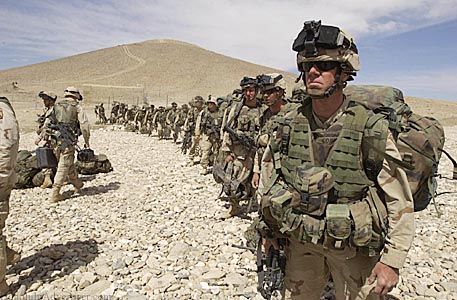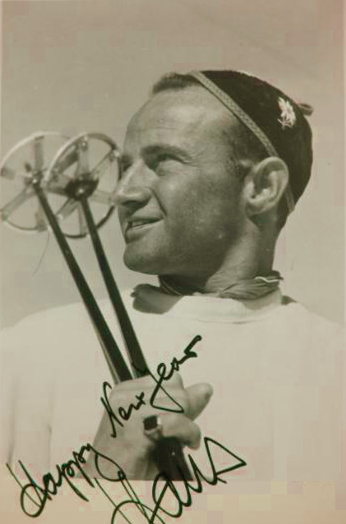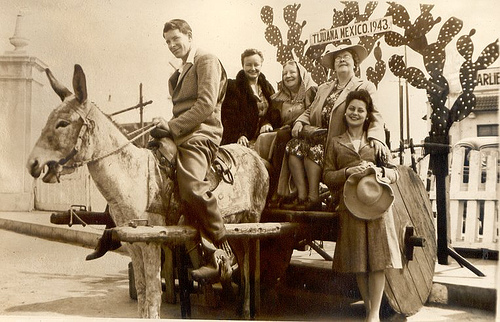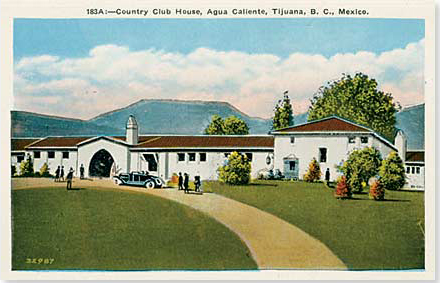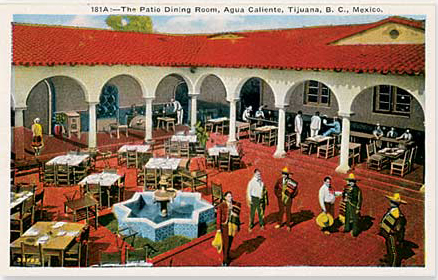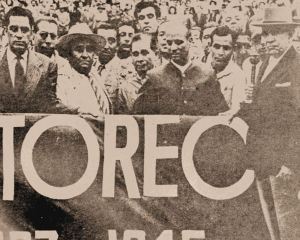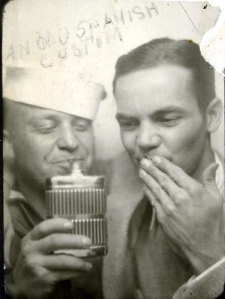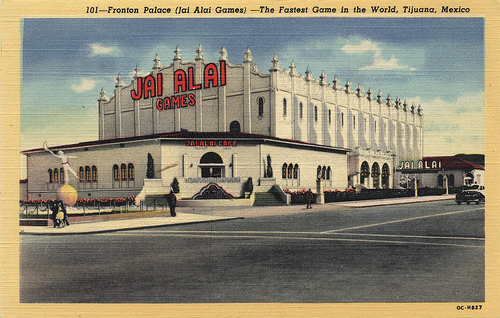A Memorial Day Wish ~ The 10th Mountain Division • 1943-2010
While Many of Us Americans enjoy Barbecues & Ballgames for Memorial Day ~
There are a lot of Intrepid Americans out there who may not have quite the Three-Day Holiday most of us are looking forward to…Airports, Backyards & Bars Across America will be Filled to the Brim with Happy Hour Americans for the Duration of the Downtime. Americans are Pre-occupied with Partying, Pre-Game & Postgame, The Playoffs, Pabst Blue Ribbon & Plastic Surgery these days. Once Upon a Time ~ Then & Now…there were a lot of Americans who Did it the Hard Way so a complete generation of us don’t even have to look up from our iPhones or Facebook or ESPN to consider a time or a place where Hardship Prevails…
(Above) Soldiers of the 10th Mountain Division wait to board a 214th Aviation Regiment helicopter near Ghazni, Afghanistan.
The 10th Mountain Division (Light Infantry) is a light infantry division of the United States Army based at Fort Drum, New York. It is a subordinate unit of the XVIII Airborne Corps and the only division-sized element of the US Army to specialize in fighting under harsh terrain and weather conditions. The division retains the “mountain” designation for historical purposes but is actually organized as a light infantry division.
Activated in 1943, the 10th Mountain Division was the last among currently active divisions to enter combat during World War II. (According to “World War II Order of Battle”[2] by Shelby L. Stanton, the 10th Mountain Division entered combat on January 8, 1945, followed by the 8th, 13th, 16th, and 20th Armored, and the 65th, 71st, 76th, 86th, 89th and 97th Infantry divisions in the final months of the war.) The 10th fought in the mountains of Italy in some of the roughest terrain in the country. After the war, the division was briefly redesignated as the 10th Infantry Division, a training unit.
 Nowadays the 10th Mountain Division makes their home for the most part in the mountains of Afghanistan.
Nowadays the 10th Mountain Division makes their home for the most part in the mountains of Afghanistan.
There is no ‘Bottle Service’ or Swimming Pools, or Babes in Bikinis or even a Beach for these guys. They live largely outside in conditions that range from searing heat to extreme cold, and their Holiday Outfits consist of sometimes over 100lbs. of gear. Personnel in this Division come from places like Colorado, or North Dakota, Montana and the Mountains of California. They are trained in all the Usual Requisite Soldiering skills, and have an additional resume’ that includes Heavy Hiking, Mountaineering, Snowshoeing & Skiing in the course of their Duties.
The history of the 10th Mountain Division is rooted in developments prior to the United States’ entry into World War II. Influenced by the 1939 success of Finnish troops in warfare against invading Soviet units and by concern over escalating hostilities across Europe, individuals in the War Department and the military turned their attention to the status of military preparedness for winter warfare. Troops stationed at Fort Snelling, Minnesota had engaged in specialized training, yet no large-scale maneuvers had taken place. In May of 1940, the American Alpine club urged the Department of War to begin mountain warfare training and subsequently began advising the military on equipment necessary for mountain and winter warfare.
Additional pressure for the development of elite mountain troops came from Charles Minot Dole (Minnie Dole), Chair of the National Ski Patrol Association of the National Ski Association. Dole believed the need for trained alpine soldiers existed and he emphasized the presence of skilled skiers in the US able to meet these special needs of the military. When the War Department created ski patrol units within several existing divisions, the National Ski Association reviewed equipment and training and by the end of the winter the advisory relationship had become formalized.
 So just a Little Reminder ~ These guys, or Other Guys just like the originals above from 1945, are Out There Right Now. They may have a Cerveza or Two for their Holiday, they May Not. So ~ while you’re Kicking Back & Having a Good Time, or you’re Hung Over, or complaining you had one too many Slices of Aunt Esther’s Pie, or the Zone Defense of your favorite NBA team broke down in the 4th Quarter, or What to Wear, or you’re Stuck in Traffic ~ maybe Raise A Toast to These Guys, and the Thousands of American Ladies & Gentlemen in the Armed Services out there on the job doing what they do ~ So we don’t have to…Happy Memorial Day ~ FdeC.
So just a Little Reminder ~ These guys, or Other Guys just like the originals above from 1945, are Out There Right Now. They may have a Cerveza or Two for their Holiday, they May Not. So ~ while you’re Kicking Back & Having a Good Time, or you’re Hung Over, or complaining you had one too many Slices of Aunt Esther’s Pie, or the Zone Defense of your favorite NBA team broke down in the 4th Quarter, or What to Wear, or you’re Stuck in Traffic ~ maybe Raise A Toast to These Guys, and the Thousands of American Ladies & Gentlemen in the Armed Services out there on the job doing what they do ~ So we don’t have to…Happy Memorial Day ~ FdeC.
¡ Viva Velvet ! ~ A View of Vintage Tijuana • South of the Border 1928-1968
Ay Ay Ay ~ Long Before Estamos Californianos travelled to Disneyland, Las Vegas or the Coachella Music Festival for The Weekend ~ We Went South of the Border ~ Down Mexico Way…A Lost Paradise In the Days before the Carteles and All the Drugs Drama ~ Mexico was Fun Fun Fun..!

The Original Caesar's Restaurant & Bar ~ The Creators of none other than the Caesar Salad, Tijuana 1920's
Tijuana, B.C. Mexico ~ An Exotic Name for a Once Very Exotic Place, even to us Dyed-in-the-Natural Cotton-Californians. In the Nineteen-Twenties up to Quite Recently, (It’s become a Little Heavy Down There lately), Tijuana Beckoned Us with Amorous Adventures of Sport, Games of Chance, Just Plain Carousing and a Variety of Questionable Activities. One could Pack Up His or Her Favorite Senorita or Senor, Gang of Four or Family and within 2 or 3 hours, Travel to Tropical Tijuana or further south to Exotic Ensenada for all kinds of Fun in the Sun !
From 1919 to 1933, Alcohol, Casinos, Prostitution and Horse Racing were all forbidden or tightly restricted in California, (what else is new) and all were easily available in Tijuana. A Go-South-Young-Man No-Brainer !
Because of this California Condition, Great Pleasure Palaces were built, including the city’s fabled Agua Caliente Casino & Racetrack, and countless Hollywood celebrities, their imitators, various wanna-be’s and hangers-on Crept South by car, rail, ship and small plane.
Agua Caliente during the 1920’s was The Biggest Attraction in Tijuana – and beside being a Major Party Attraction to the EveryDay California Gentry, was a Second Home to many of the most famous Horse Racing Jockeys of the day, including the Legendary “Iceman”, George Woolf ~
Woolf was One of the Winningest Jockeys of his time along with his pal, a Fun-Loving Fella named John ‘Red‘ Pollard. Within about 6 years the 2 Men would Become Most Famous for Courting and Riding to Victory perhaps the Most Famous Californian of her era ~
~ A Demure Yet Fiesty Young Lady named Seabiscuit.
Built on an Artesian Hot Spring, hence the name ‘Agua Caliente‘, the Casino attracted and entertained high profile patrons as the stars of the Film Industry in Hollywood would venture down to Mexico for Fun, Drink and Gambling. The Grandstand had a Spanish~Mediterranean feel to it with its white buildings and red tile roofs…
By All Accounts, Agua Caliente was the Jockey’s Favorite on their circuit, this being the days before Del Mar & Santa Anita Racetracks were built Up North in California Proper. These Boys had the Neighboring Boardinghouse nee’ Bordello at their Disposal On The Hill above the Track, along with No Doubt Mucho Macho roving Bands of Mariachis, Lovely Latin Ladies & Liberal Libations ~ as they were Outright Local Stars and Heroes of The Tijuana Sporting Life…
The Agua Caliente Casino was the Crown Jewel of the Classic Tijuana era. It opened in 1928, Tiled and Stuccoed, All California Moorish and Missionary, Vast and Self-Assured. It lay only six miles South of the Border, covered 655 acres and cost about $10 million at the time ~
The Lion’s Share of The Dough was supplied by American investors. It was “one of the most opulent resorts ever to grace the Americas,” but more significantly, it was the inspiration for Las Vegas in the years following…
Wish I could jump in My Time Machine & Stop In for a Couple Margaritas on that Patio, a Couple Cancions from the Mariachis, then Head Straight to the Track ! ~
Along with the Casino offering Roulette, Baccarat and Faro (but no windows or clocks), Agua Caliente featured about 400 rooms and bungalows, a horse-racing track, a golf course, a spa fed by natural spring water (hence the name), an Art Deco ballroom, various cocktail bars, tennis courts, a riding academy, a landing strip for small planes, a blue-tiled minaret and an iconic bell tower, a replica of which now stands at the beginning of Boulevard Agua Caliente.
Charlie Chaplin and Gary Cooper came to the Races. Douglas Fairbanks sat on the Board of Directors. Jean Harlow tried the golf course. Bing Crosby and Clark Gable saddled up horses, and the showroom featured a teenage dancer, Ms. Margarita Cansino, who later changed Her Hollywood Name to None Other Than Rita Hayworth.
If One tired of All The Excitement at The Races, Perhaps a Cerveza or a Siesta is in order, or go Across Town to El Toreo for a Hemingway-esque Day in the Sun at the Bullfights…
¡ ole !
The very first Plaza de Toros (That’s Bullring in Gringo-Speak) in Tijuana was a wooden structure that would accommodate 2000 and was built in 1904 by Sevillian banderillero Antonio Gonzalez Rubio and Mexicali merchant Don José R. Alvarez, in the square block then described by 3rd and 4th streets and Avenida Revolución and Avenida Madero.
In May of 1911, the Plaza burned to the ground, allegedly by Welsh mercenary Caryl Pryce, and was subsequently replaced by a new, slightly larger (capacity 2,500) Plaza, on 5th and 6th streets, to become the Center of Tijuana’s Toro Activities in the 1920s and ’30s.
It was officially inaugurated as Plaza El Toreo de Tijuana on July 3, 1938.
Practically every Great Torero or Bullfighter of the era performed in the historic Tijuana Plaza de Toros ~ and a Few Well-Known Toreras performed there tambien...
More than a Few Celebrities visited Tijuana All The Time, even The Mild-Mannered Charles Lindbergh, ‘Lucky Lindy’ himself. He doesn’t look like a Real Fun Guy to Hang Out with though, Wonder how he did at The Track ..?
Enough Will All the Turismo, History & Culture ~ Sometimes you Just Need a Beer…
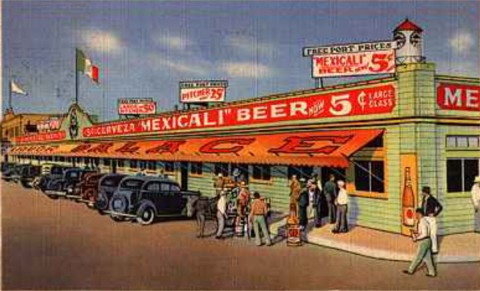
You could Belly Up to the Longest Bar in the World ~
La Cantina Ballena, a Real Whale of a Bar in Mexicali ~ and Throw Down just 5 Centavos American for a Tall Cold Cerveza, or Go Big and Get a Pitcher for .25c ~ Viva Mexico !
In the Midst of All the Mariachi Madness, no one saw what was coming. On the Horizon, everything was Manana. In 1933, Prohibition came to an end and a series of morally conservative presidents ruled Mexico. Nevada legalized gambling in 1931.Tijuana all but dried up and blew away. How Ironic ~ the Same Presidents had relied on Tijuana’s income to fund their armies during the Mexican Revolution. The Enterprising Tijuana Turismo Industry had to Dream Up other Forms of Entertainment now that alcohol was once again legal in Estados Unidos.
The U.S. was Gearing Up the Military Presence in the late 1930s in anticipation of the Second World War, and San Diego became a Major Navy Base. Tijuana responded to the sailors’ needs by saturating the area around the old bull-ring with hotels, restaurants, and bars. Informal betting along the lines of three-card monte was common.
The Vida Alegre, that is to say, Prostitution, extended into the suburbs of Colonia Libertad and Colonia Independencia. Another Form of Entertainment & Betting Revenue in Tijuana debuted with the Opening of El Grande’ Fronton, The Jai-Alai Palace in 1947 ~
Jai Alai ( High’-Lie) originated as a handball game in the Basque area of Spain’s Pyrenees Mountains over four centuries ago. Games were played on Sundays and holidays in small villages at the local church, hence the name jai alai which means “merry festival” in Basque. Players would use the open-air church courtyard and the walls of the church as the fronton or arena. Often called the “fastest sport in the world,” Jai Alai consists of men with weird basket appendages a la Cricket, whipping rock-hard balls against a granite wall, trying to make their opponent miss the return while avoiding being hit with the speeding bullet themselves. It’s a game that requires a combination of skill, speed, and acrobatics.
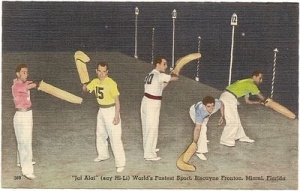 The game spread to and gained popularity in Spanish-Speaking countries like Mexico and Cuba, and even the Phillipines. After its initial introduction in the U.S., frontons started going up all over the country. Spectators flocked to jai alai arenas to watch the “ballet with bullets,” and it quickly became an alternative to horse and dog racing for gambling.
The game spread to and gained popularity in Spanish-Speaking countries like Mexico and Cuba, and even the Phillipines. After its initial introduction in the U.S., frontons started going up all over the country. Spectators flocked to jai alai arenas to watch the “ballet with bullets,” and it quickly became an alternative to horse and dog racing for gambling.
Betting on Jai Alai is just like betting on horse racing or dog racing. So you can place a single “win,” “place,” or “show” bet on a particular team or you can pick two teams to finish first and second with a “quinella” bet. Spectators can also make Trifecta and Superfecta bets.
The skill and agility of the players allows for some handicapping but the speed and tricky action of the pelota introduces an element of luck into the equation ~
Another Development in Mexico’s Mad Quest for Turismo Dolares was the Emergence of The Maquiladora ~ What Us Gringos would call The Black Velvet Painting Factory…
There are a Few Iconic Superheroes of the Black Velvet Painting. Of Course ~ Numero Uno The World Over is Senor Jesus Christ just nipping Elvis By a Nose at the Wire in Popularity. Voluptuous Pin-Up Girls, Marilyn and Madonna, The Devil & His Vices (there are a lot of THOSE in Tijuana), Jungle Fantasies and Religious Scenes are common themes. Personal Favorites de Federico tend toward what could be called The American Badass Genre, Charles Bronson, John Wayne and The Man with No Name ~
Latin Art Curator Christina Ochoa says Black Velvet Painting goes back to the 14th century, when Marco Polo found samples of velvet paintings in Kashmir. The popularity of American black velvet painting can be traced to the work of one man known as the “American Gauguin” — Edgar Leeteg, a native of Sacramento, California, who lived and painted in Tahiti from 1933-to-1953. Leeteg, although no more skilled at the technique than his Mexican Artesano Counterparts, can be credited with effectively blending Tiki Style & Culture with the Mexican Maquiladora style of painting, and that blending in effect, is what California Culture is All About ~ Que No ?
Leeteg’s vast output of thousands of black velvet paintings served as the inspiration for imitators who flocked to create a vast industry churning out a form of art that would be indelibly associated with tourism. Many of Leeteg’s works were purchased by Navy personnel based in Hawaii, who would return to San Diego, bringing Leeteg nudes and commission Mexican painters in Tijuana to make similar portraits of their girlfriends in black velvet. She Looks Damn Good above The Waterbed ~ and In It !
For Years, Even Though the Ractrack was Gone, there were and are still Bullfights, but the old Gran Corrido is gone, and even the One that Replaced it is gone too….
A New Estadio is outside town now, not Quite the Same ~ the 3rd or 4th in a Long Line of Bullrings Long Gone. The Jai Alai Grande Palacio is Gone as well. There are still Endless Mercados…but instead of Switchblades, Black Velvet Elvis’s, Cusano Rojo Mezcal with The Worm in the Bottom, Strip Clubs, Donkey Shows, Serapes, Paesant Blouses, Endless Bad But Cool T-Shirts, Maracas & Huaraches, it’s Fake Chanel and Hermes’ (from China) and The Illicit Internet for Trashy Tijuana Turistas Looking for Quick Insta-Love. The Maquiladoras Still Churn Out the Velvet Paintings to Sell to Unsuspecting Gringos Tired & Wasted on their Way Home, lined up at The Border, but they’re not Quite The Same, either. Instead of Toreros, it’s Tupac, and even he’s not Around Anymore ~ It All kind of makes you feel you’re Just Lucky to Still Be Around at all…And those Tacky Souvenirs you Threw in the Trash, saying Why in Hell Did I Buy this ? – Are Low-and High-Brow Art Now… But Weren’t They Always ?
¡ VIVA TIJUANA !


